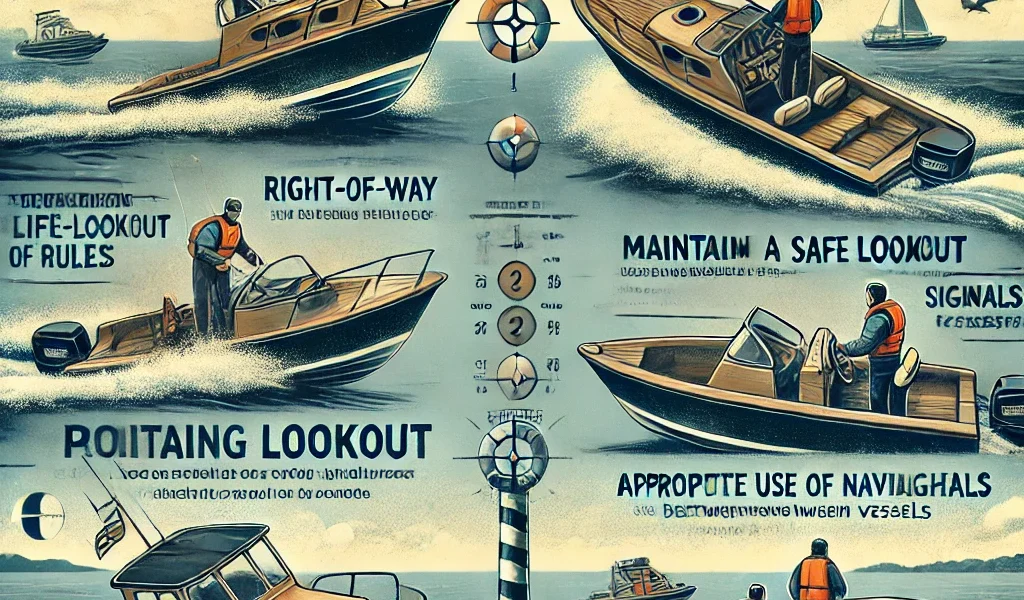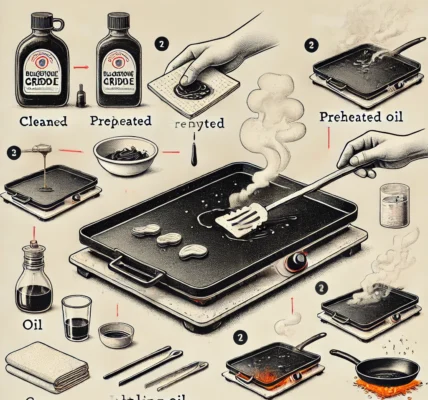What Should You Do to Avoid Colliding with Another Boat: A Complete Guide
What Should You Do to Avoid Colliding with Another Boat: A Complete Guide
Boating is a thrilling and enjoyable activity, whether for leisure, fishing, or exploration. However, like driving a car, operating a boat requires attention, knowledge, and safety measures to avoid accidents. Collisions between boats can result in serious injuries, property damage, or worse, fatalities. Knowing how to navigate properly and understanding maritime rules are crucial for staying safe on the water.
In this guide, we’ll explore essential strategies and practices to avoid colliding with another boat and maintain safe boating practices.
Table of Contents
- Understand the Rules of the Water
- Maintain a Proper Lookout
- Be Aware of Navigation Lights and Signals
- Observe Safe Speeds
- Follow Right of Way Rules
- Use Proper Communication
- Adjust for Visibility and Weather Conditions
- Prevent Distractions
- Practice Defensive Boating
- Conclusion
Understand the Rules of the Water
One of the most effective ways to avoid collisions is to familiarize yourself with nautical rules of the road, much like the rules of the road for driving. The U.S. Coast Guard and international maritime organizations have established rules for safe boating that are recognized worldwide.
The most important rules to know include:
- Give-way vessels: The boat that must take action to avoid a collision.
- Stand-on vessels: The boat that should maintain its course and speed.
- Crossing situations: When two vessels are on a collision course, the boat on the port (left) side must give way.
International Regulations for Preventing Collisions at Sea (COLREGS)
These are the internationally recognized set of rules governing the behavior of vessels. You should be aware of and adhere to these rules, especially in international waters or when encountering other vessels that may not be familiar with local regulations.
Maintain a Proper Lookout
The importance of maintaining a proper lookout cannot be overstated. All vessels are required to have someone on watch at all times, scanning for potential hazards. This responsibility extends to both daytime and nighttime boating.
Key lookout tips:
- Assign a dedicated lookout: Especially in crowded or busy waters, assign someone solely responsible for watching for other boats, obstacles, or changes in water conditions.
- 360-degree awareness: Continuously check all directions for other boats, especially smaller vessels or watercraft like kayaks or jet skis that may be harder to spot.
- Listen: Be alert to the sounds of horns, whistles, or engine noises from other boats.
Be Aware of Navigation Lights and Signals
Proper use of navigation lights and sound signals helps avoid collisions, especially in low-light or nighttime conditions. These signals communicate your position, direction, and intentions to other boaters.
Navigation Lights
- Red and Green Lights: These indicate the sides of a vessel—red for port (left) and green for starboard (right). When you see another boat’s red light, they have the right of way. When you see their green light, you are the stand-on vessel.
- White Lights: A white light at the rear (stern) of a boat indicates the vessel is moving away from you.
Sound Signals
Sound signals are used to indicate changes in direction or to signal your presence in fog or poor visibility:
- One short blast: Indicates you intend to pass another boat on your port side.
- Two short blasts: Indicates you intend to pass on the starboard side.
- Five short blasts: This is the danger signal, meaning there is a potential risk of collision or misunderstanding between vessels.
Observe Safe Speeds
Maintaining a safe speed is crucial to avoiding collisions. Excessive speed reduces the time you have to react to sudden obstacles or changes in other boats’ movements.
Factors to Consider
- Traffic density: Slow down in areas where there is heavy boat traffic, such as marinas or harbors.
- Water conditions: In rough waters or strong currents, reduce speed to maintain better control of your vessel.
- Visibility: In fog, rain, or at night, reduce your speed to account for limited visibility.
Follow Right of Way Rules
Much like on the road, there are right-of-way rules on the water. Understanding these rules helps prevent accidents by dictating which boat should yield in different situations.
Head-On Situations
When two powerboats meet head-on, both vessels should alter their course to starboard (right) to pass each other safely.
Overtaking Another Boat
If you are overtaking another vessel, it is your responsibility to keep clear and pass safely on the appropriate side, typically on the starboard side. The boat being overtaken should maintain its speed and course.
Crossing Paths
When two boats are crossing paths, the vessel on the port (left) side must give way, while the vessel on the starboard (right) side has the right of way.
Use Proper Communication
Clear communication is vital for avoiding collisions, especially when boating in close quarters with other vessels.
- Use VHF Radio: In situations where you need to clarify intentions, use your marine radio to communicate with other vessels. Channels 13 and 16 are commonly used for ship-to-ship communication.
- Hand Signals: In smaller boats or when the radio isn’t an option, clear hand signals can help communicate intentions with other boaters.
Adjust for Visibility and Weather Conditions
Poor visibility and adverse weather conditions significantly increase the risk of collisions. Being prepared to adjust your boating practices based on these factors is critical.
Fog, Rain, and Nighttime Boating
- Use radar and GPS: If your boat is equipped with radar or GPS systems, rely on these to detect other vessels in poor visibility.
- Sound fog signals: In foggy conditions, sound your horn at regular intervals to alert other vessels to your presence.
- Slow down: Reduce your speed and maintain a sharp lookout when visibility is compromised.
Wind and Currents
Strong winds and currents can cause boats to drift or make steering more difficult. Take these into account when navigating near other vessels, docks, or obstacles.
Prevent Distractions
Distractions are dangerous on the water, just as they are on the road. Ensure that the person operating the boat stays focused on navigation and safety at all times.
Tips for Staying Focused
- Limit multitasking: The captain should avoid tasks like eating, texting, or unnecessary conversations that take attention away from operating the boat.
- Delegate duties: Assign someone else to handle tasks like checking the GPS or adjusting the stereo, so the captain can focus on piloting the vessel.
Practice Defensive Boating
Defensive boating means always being prepared for the unexpected, much like defensive driving.
Key Defensive Boating Practices
- Assume others don’t see you: Always act as though the other vessel might not be aware of your presence.
- Maintain a safe distance: Keep a considerable distance from other boats, especially those that are towing water skiers or fishing, as their movement can be unpredictable.
- Avoid alcohol: Operating a boat under the influence of alcohol is illegal and increases the risk of accidents. Stay sober to stay safe.
Conclusion
Avoiding collisions with other boats requires a combination of knowledge, attention, and responsible boating practices. By understanding and adhering to maritime rules, maintaining a proper lookout, observing safe speeds, and communicating clearly with other boaters, you can significantly reduce the chances of an accident on the water. Defensive boating and adjusting for weather and visibility conditions are also crucial for ensuring the safety of everyone aboard your vessel.
Boating is an enjoyable activity, but safety must always be the priority. By following the guidelines outlined in this article, you can navigate the waters confidently and responsibly.



